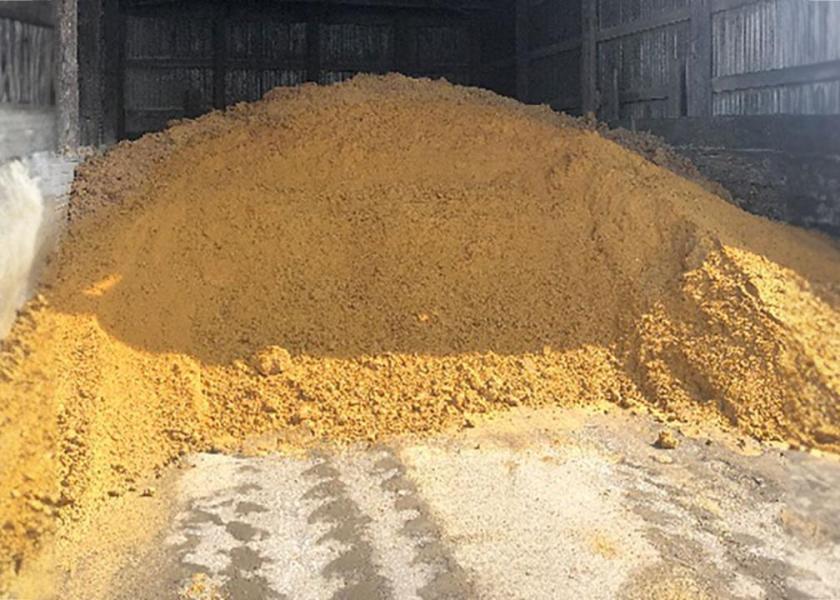Understanding Protein in Feed

Have you ever received a text message where someone abbreviated some words and you have no idea what they mean? We often get lost in abbreviations and their exact meaning. Abbreviations are a common form of communication in texting each other. As cattle producers, we see abbreviations, such as CP, RDP, RUP and MP, in relation to feedstuffs. It is important to understand the different terms related to protein in feed.
Crude Protein (CP)
Crude protein (abbreviated as CP) is a measurement of nitrogen content of the feed. CP concentration is calculated using the nitrogen (abbreviated as N) concentration times 6.25, which assumes that the average N concentration of a protein molecule is 16%. Crude protein is divided into rumen degradable protein (abbreviated as RDP) and rumen undegradable protein (abbreviated as RUP).
Billions of microbes, such as protozoa and bacteria, call the cow’s rumen home and are responsible for the fermentation digestion that occurs within this organ. A CP level of 7% or greater should be supplied for a mature cow, as forage digestion will decrease below this threshold. It is important to note that a cow’s requirement may be higher, as this level is the minimum to support those rumen microbes.
Rumen Degradable Protein (RDP)
Producers might have heard this type of protein called degradable intake protein (abbreviated as DIP). Rumen degradable protein is the protein available for the rumen microbes to use. The microbes work in the rumen to break down and ferment the feed consumed by the cow. Thus, RDP is essential for microbes to use fiber efficiently and release energy for the animal to use. The microbes themselves flow into the small intestine and they, along with RDP, represent the most-important protein source for the ruminant and the majority of amino acids entering the small intestine. Feeds high in RDP include forages, soybean meal, and non-protein nitrogen (abbreviated as NPN) sources, such as urea and ammonia.
Rumen Undegradable Protein (RUP)
Rumen undegradable protein (abbreviated as RUP) is the second most-important source of amino acids to the animal. Rumen undegradable protein is the proportion of dietary protein that is not digested by the microbes in the rumen and is available for the ruminant animal for tissue growth or lactation. This is also called escape protein, bypass protein, or undegradable intake protein (abbreviated as UIP). This protein is the remaining portion of the CP protected in the rumen and available for breakdown in the lower digestive system. Feeds with a higher portion of RUP include distiller’s grains, corn gluten meal, corn grain, and blood meal.
Corn silage is a common cattle feed here in South Dakota. Corn silage has an average CP of 6.5 to 8.5%. A majority of the crude protein is in the form of RDP, and because of this, corn silage-based diets could benefit from supplemental protein that is ruminally undegradable.
Metabolizable Protein (MP)
Cattle have a metabolizable protein (abbreviated as MP) requirement, which includes RDP, RUP, and microbial protein. Metabolizable protein requirements of cattle vary with the stage of production. For example, growing calves respond to RUP supplementation as a strategy to increase MP when grazing forage. Lactation and growth both require a greater amount of MP, often more than can be supplied by microbial crude protein and RDP. For this reason, rapidly growing and lactating cattle usually benefit from a protein supplement high in RUP. However, a dry-bred mature cow grazing dormant range would benefit from a supplemental source of RDP to support the rumen microbial function with fewer advantages from providing additional RUP.
Originally published by SDSU Extension, written by Sydney Vanderhoff, SDSU Extension Beef Nutrition Field Specialist, as well as Madison Kovarna, SDSU Extension Beef Nutrition Field Specialist.







